I beat the Ronaldinho of the Creole balls (ENG-ESP)
(Edited)
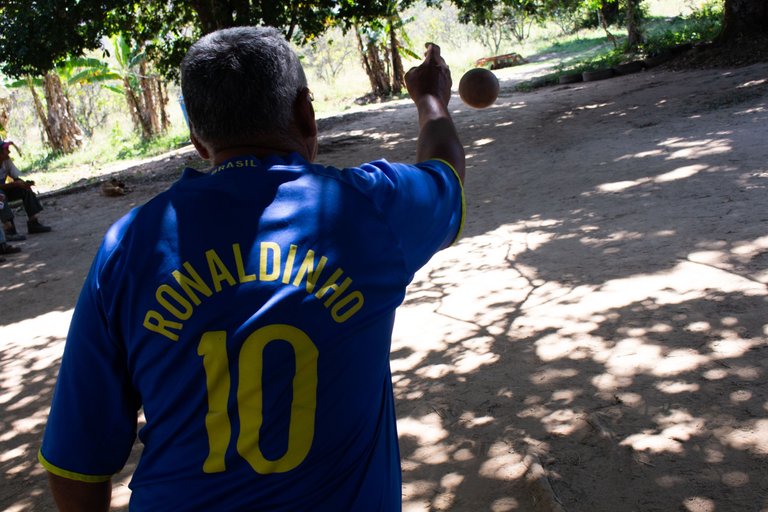
ENGLISH
Traditional games are usually played by older people, but this does not mean that young people are oblivious to them.
For example, all my life I had seen from afar one or another game of Bolas criollas, as a national sport is called.
I had never paid attention to it until the day I met a photographer friend, named Angel, in Bejuma, Venezuela. We were walking through part of the town until we found a place with some balls, and he didn't hesitate to invite me to play.
I had no idea of the rules or anything like that until Angel explained it to me, but before I tell you what the game is about, first I'll tell you its history.
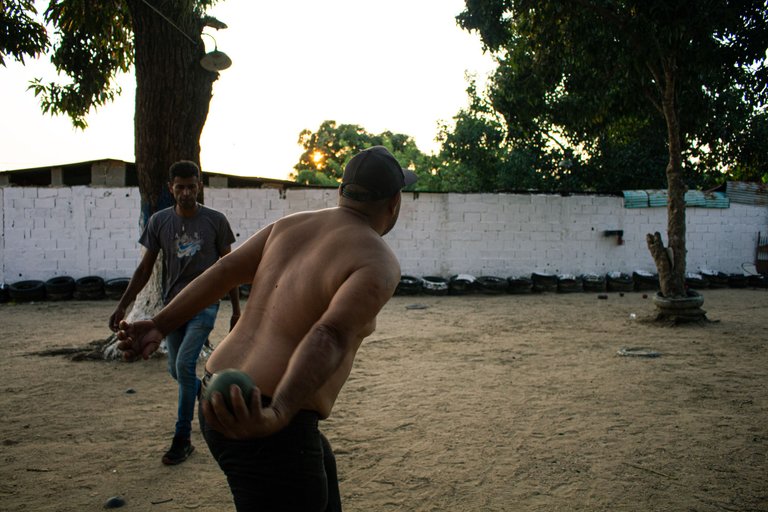
Bolas criollas have an European origin and arrived in Venezuela during the colony, when the Spanish Empire ruled the lands, but it was not until 1930 when it became popular in the country, and quickly gained strength in other countries of the Latin American region such as Colombia (especially in the border city of Cúcuta), Cuba, Aruba, Curaçao and Bonaire. As early as 1946 it became a national sport. Even national tournaments have been organized since then.
Angel did not know all this information, but that does not mean that he was a bad player. Quite the contrary.
He, with a frown in order not to lose concentration, explained to me that the game is based on bringing as many balls of the same color as possible close to a small ball, called a mingo, which is previously thrown at a distance that favors one player by means of a draw.
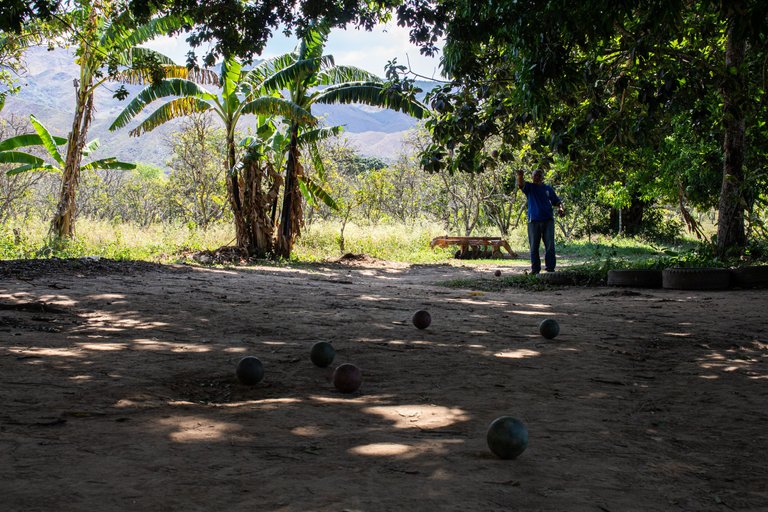
Once the balls of both sides are finished, which are 8 each (8 attempts), the balls of a given color that have remained within a circle in the mingo are counted, to see which one is the closest and, therefore, obtaining the victory.
I tried to play, and for my first time, I won two games, while Angel, who was wearing a soccer shirt with Ronaldinho's name on it, won 5, earning him the nickname of the Ronaldinho of the Creole balls.
I think maybe I would win more games if I wouldn't focus on taking photographs of the match, but, I tried my best.
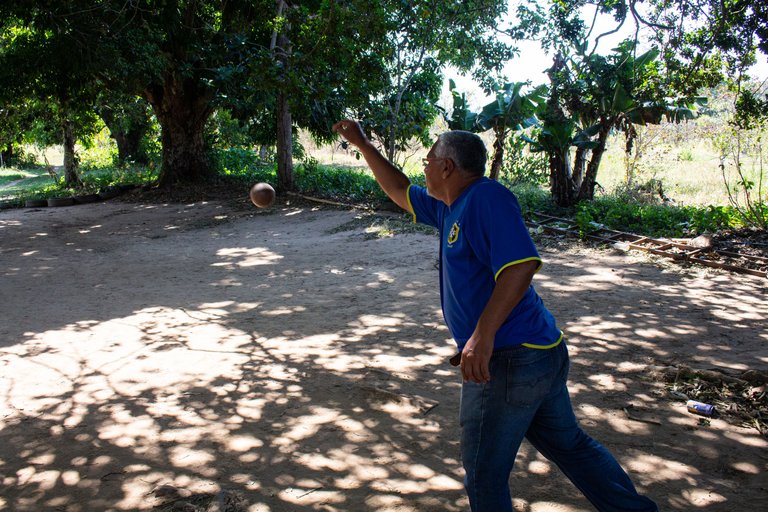
ESPAÑOL
Los juegos tradicionales suelen ser practicados por personas mayores, pero esto no significa que los jóvenes seamos ajenos al respecto.
Por ejemplo, toda mi vida había visto desde lejos uno que otro juego de Bolas criollas, como se le llama a un deporte nacional.
Nunca le había prestado atención hasta el día que me encontraba con un amigo fotógrafo, llamado Ángel, en Bejuma, Venezuela. Estábamos recorriendo parte del pueblo hasta que conseguimos un patio con unas bolas, y él no dudó en invitarme a jugar.
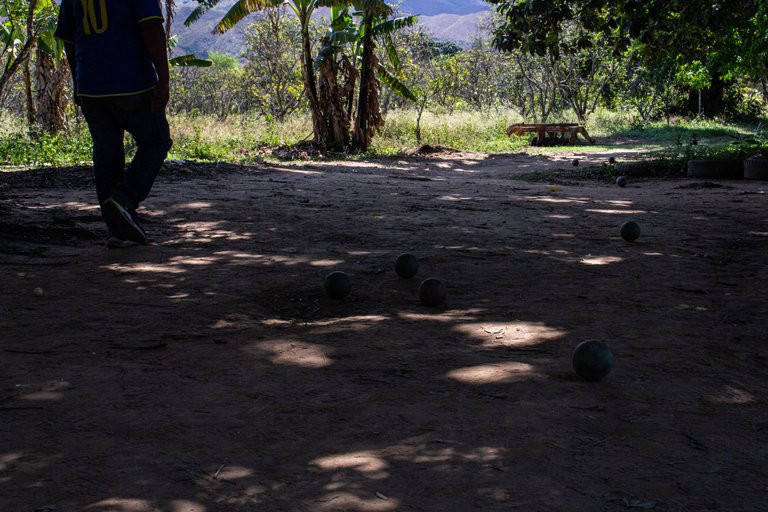
Yo no tenía idea de las reglas ni nada por el estilo hasta que Ángel me explicó, pero antes de decir de qué va el juego, primero voy con su historia.
Las Bolas criollas tienen un origen europeo y llegó a Venezuela durante la colonia, cuando el Imperio español gobernaba las tierras, pero no fue hasta 1930 cuando se hizo popular en el país, y rápidamente cobró fuerza en otros países de la región latinoamericana como Colombia (especialmente en la ciudad fronteriza de Cúcuta), Cuba, Aruba, Curazao y Bonaire.
Ya en 1946 se convirtió en un deporte nacional. Incluso desde ese entonces se han organizado torneos nacionales.
Toda esta información la desconocía Ángel, pero eso no quiere decir que fuera un mal jugador. Todo lo contrario.
Él, con el ceño fruncido en aras de no perder la concentración, me explicó que el juego se basa en acercar la mayor cantidad de bolas de un mismo color cerca de una pelota pequeña, llamada mingo, que es lanzada anteriormente a una distancia que favorezca a un jugador por medio de un sorteo.
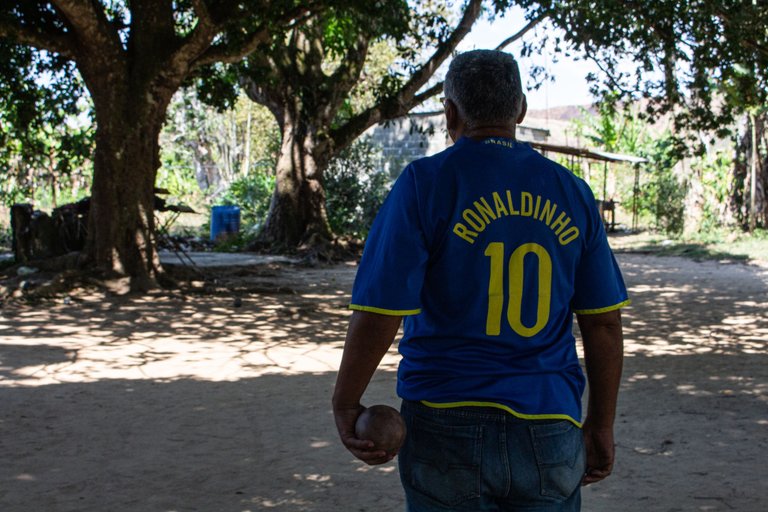
Una vez se acaben las bolas de ambos bandos, que son 8 cada uno (8 intentos), se cuentan las bolas de un color determinado que hayan quedado dentro de un círculo en el mingo, para ver cuál es la más cercana y, por lo tanto, obteniendo la victoria.
Intenté jugar, y para ser mi primera vez, gané dos partidas, mientras que Ángel, que vestía una franela de fútbol con el nombre de Ronaldinho, ganó 5, ganándose además el apodo del Ronaldinho de las bolas criollas.
Creo que hubiera ganado más partidas si no me hubiese enfocado en tomar fotos, pero hice lo que pude.
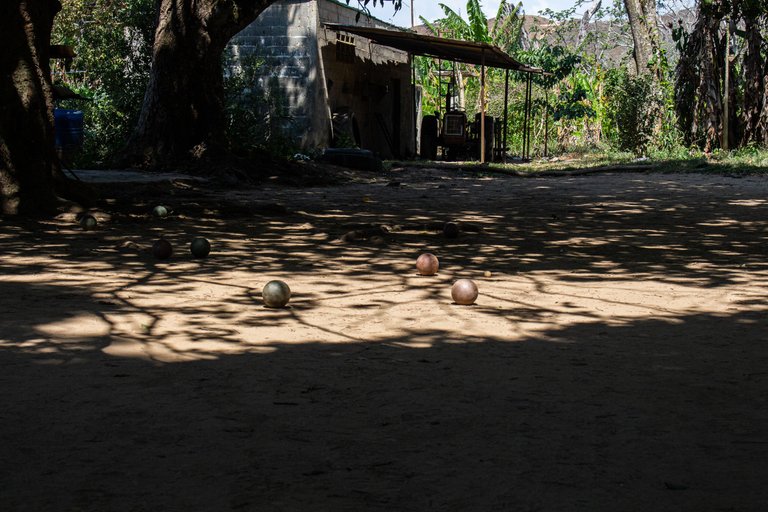
photofeed
spanish
photography
photographer
pictures
venezuela
sports
documentalphotography
pic
hive-153349
0
0
0.000
Has sido votado por
PROYECTO ENLACE
'Conectando Ideas y Comunidades'
PROYECTO ENLACE es un proyecto de curación de habla hispana enfocado en recompensar contenido de calidad y apoyar autores en su proceso de crecimiento en HIVE.
Creemos y apostamos por el futuro de esta gran plataforma, y estamos muy emocionados de poder hacerla crecer junto a esta comunidad. Así que te invitamos a publicar en nuestra COMUNIDAD y estar atento a todas las actividades que tenemos preparadas y que estaremos publicando en breve.
¿QUIERES AUTOMATIZAR TUS GANANCIAS DE CURACIÓN? SE PARTE DEL PROYECTO ENLACE APOYANDO A NUESTRO TRAIL EN HIVE.VOTE INGRESA AQUÍ PARA CONOCER LOS DETALLES.
¿QUIERES INVERTIR ENLACE? DESCUBRE COMO HACERLO Y GENERAR INGRESOS DE FORMA SEMANAL MEDIANTE TU DELEGACIÓN DE HP AQUÍ TE EXPLICAMOS COMO.
Te invitamos a participar en nuestro servidor de Discord: https://discord.gg/3S9y7BbWfS
Atentamente
EQUIPO ENLACE 2023
!discovery 35
This post was shared and voted inside the discord by the curators team of discovery-it
Join our Community and follow our Curation Trail
Discovery-it is also a Witness, vote for us here
Delegate to us for passive income. Check our 80% fee-back Program